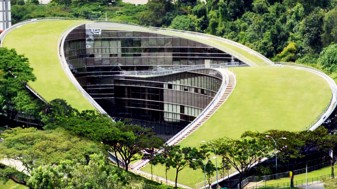Article source TheConversation.com
Research funding is a hot topic in Indonesia at the moment. The CEO of Bukalapak, an Indonesian e-commerce unicorn, recently criticised the government’s lack of investment in R&D, prompting an invitation from the palace.
Indonesian leaders understand the need to boost the country’s research competitiveness. President Joko Widodo has publicly questioned the effectiveness of Indonesia’s spending on research.
Around 80% of government research funding in Indonesia goes directly to national ministries as part of regular budget allocations. Under half of this is spent on actual research. The rest covers the costs of salaries and operations, scientific and technological services, training, and research facilities.
About Rp2.4 trillion (A$240 million) goes to the Ministry of Research, Technology and Higher Education, which administers competitive research grants to universities.
Indonesia has a National Research Plan (Rencana Induk Riset Nasional), but this does not guide funding priorities. This means Indonesia is not investing strategically in research, nor spending its existing funds most effectively.
The parliament is debating a new law on a national science and technology system (RUU Sisnas-Iptek). And a new Research Endowment Fund has just been announced, with Rp990 billion (A$98 million) allocated in the 2019 budget.
The amount of funding that countries allocate for research is important. Equally important is spending those funds in ways that promote research excellence and encourage innovation.
The economies of the Asia-Pacific region approach the challenge of fostering world-class research in different ways. But applying some key principles – including transparency and accountability, merit-based competition and selection, and industry collaboration – can help ensure investments in R&D are spent wisely.
Australia’s recent experience provides one example of how these principles have been applied.
Transparency and accountability
Three entities manage the majority of research funding in Australia: the National Health and Medical Research Council (NHMRC), the Australian Research Council (ARC), and Innovation and Science Australia. As independent statutory authorities or boards, they are governed by representatives from academia, government and business.
A key change in the funding environment in Australia in recent decades has been the rise of research management as a specialist profession. All of the government research bodies, as well as research-intensive universities, rely on significant numbers of staff who are skilled in developing, screening and managing research grants.
These research bodies decide which research proposals receive funding based on the merits of the proposals. And they do this in an open and transparent way.
All proposals are externally peer-reviewed after submission. Reviewers’ comments are typically sent to applicants for response. Some research schemes have a second layer of expert oversight, with evaluation committees drawn from industry, government and universities.
Although ministers give final approval for funding recommendations, political interference is rare. When it does happen, it is widely condemned.
All funding schemes emphasise research integrity – accuracy, honesty, objectivity and confidentiality – and rely on and support universities’ processes for ethics approval. Systems of audit help ensure reliable selection processes and accountability from the institutions receiving the funds.
This level of integrity and openness means there is a high degree of public trust in how research funding is spent. And because they are so competitive, research grants carry significant prestige for the winning researchers and their institutions.
Strategic priorities
Like many countries, Australia aligns some of its competitive research funding with national research priorities. The NHMRC outlines strategic priorities in its corporate plan. It also issues calls for research in targeted areas.
ARC grants support research on Australia’s nine Science and Research Priorities. Innovation and Science Australia funding is guided by a national roadmap on strengthening innovation capacity in Australia.
These priorities are not intended to be simple “shopping lists” for particular disciplines or areas: they are dynamic research agendas, developed by the research community, that identify the critical challenges Australia faces and the research needed to help address them.
Industry engagement
Australia has a number of funding schemes that promote innovation and links between research and industry. The ARC Linkage Program provides government-funded research grants to encourage flexible and practical collaboration between universities and businesses, government, community organisations and the international community.
The Cooperative Research Centres (CRC) program supports research leading to commercialisation of a technology or invention. These are larger-scale grants of up to 10 years where government matches industry contributions.
Tax breaks help make this attractive for companies. Under the R&D tax incentive scheme, introduced in 2012, larger companies can claim 38.5% of their eligible R&D expenditure, reducing their tax bill. Smaller companies can claim 43.5% and receive this as a tax refund.
Local solutions
A growing body of research suggests that reform efforts should focus on finding solutions that are appropriate to the local context and build on what is already in place.
Despite having a high-quality university sector, Australia had to re-evaluate its policy on research and innovation when it was ranked as having the lowest rate of research and industry collaboration in the OECD. This put the spotlight on measures to encourage collaboration, including incentives for researchers and businesses to work together, and increased investment in research infrastructure.
For Indonesia, the challenge is how to create a research infrastructure design that’s appropriate to the country’s local context. Moving towards a knowledge-based economy means investing in the best Indonesian researchers and in the areas likely to have the highest intellectual and practical dividends for the country.
That requires more intellectual infrastructure: research management systems designed around independence, transparency and accountability, research quality and ethics, and professionalism. Connecting this with strategic research priorities developed in collaboration with academia, industry and the broader community would make the system even stronger.
The main obstacles to the development of Indonesia’s research environment are well understood. And the government has taken some important steps. All it needs now is some visionary leaders to bring these ideas to fruition.



